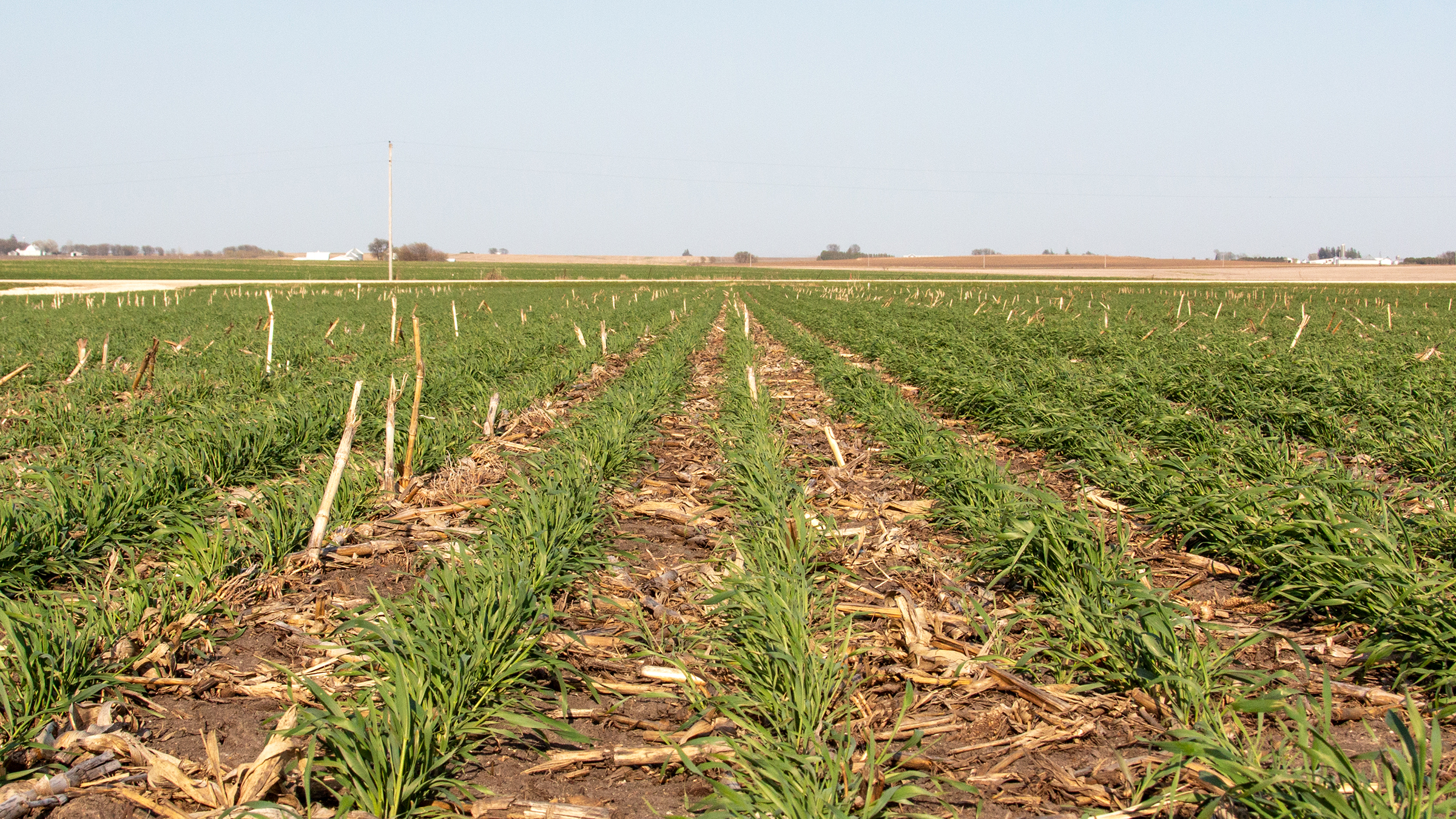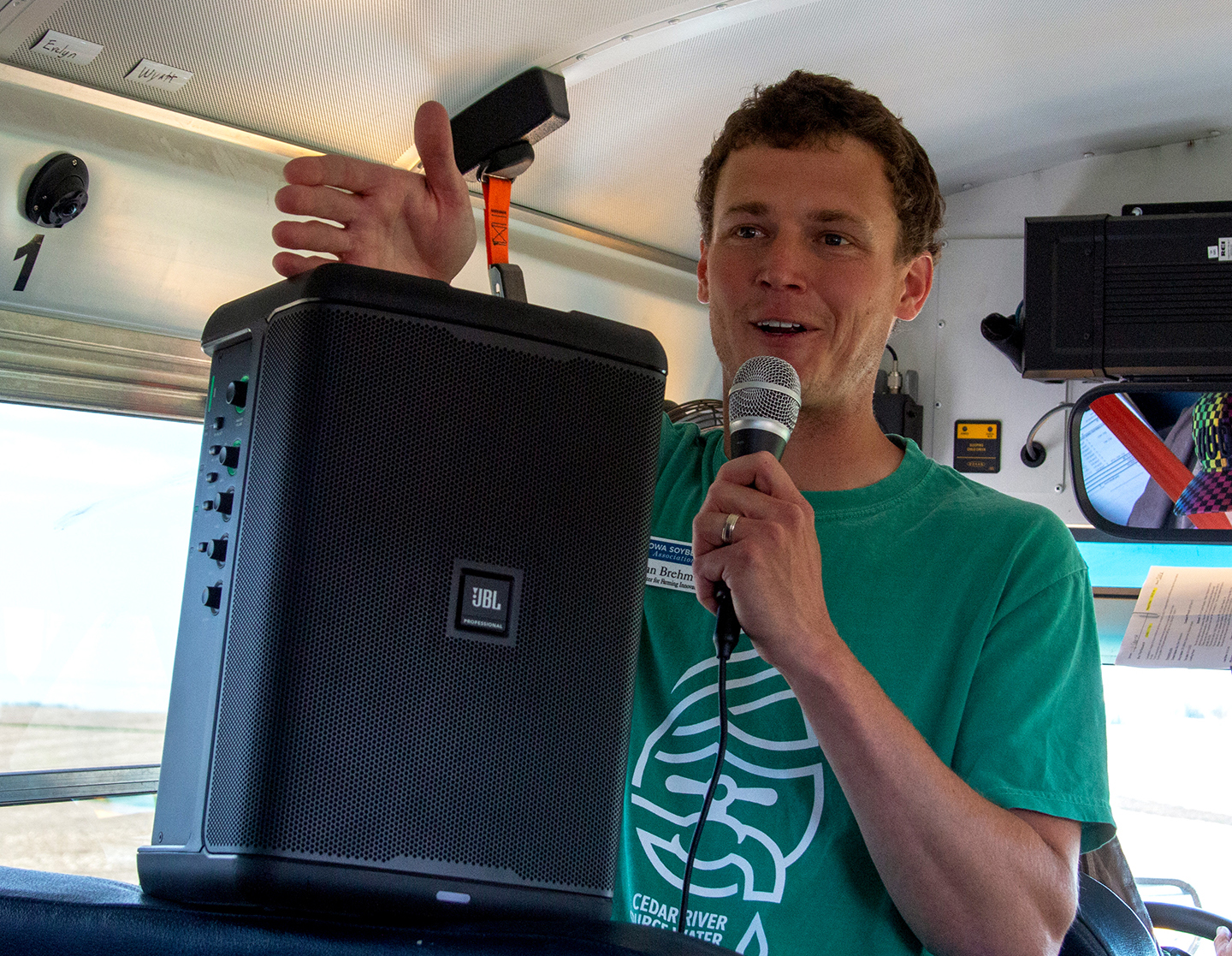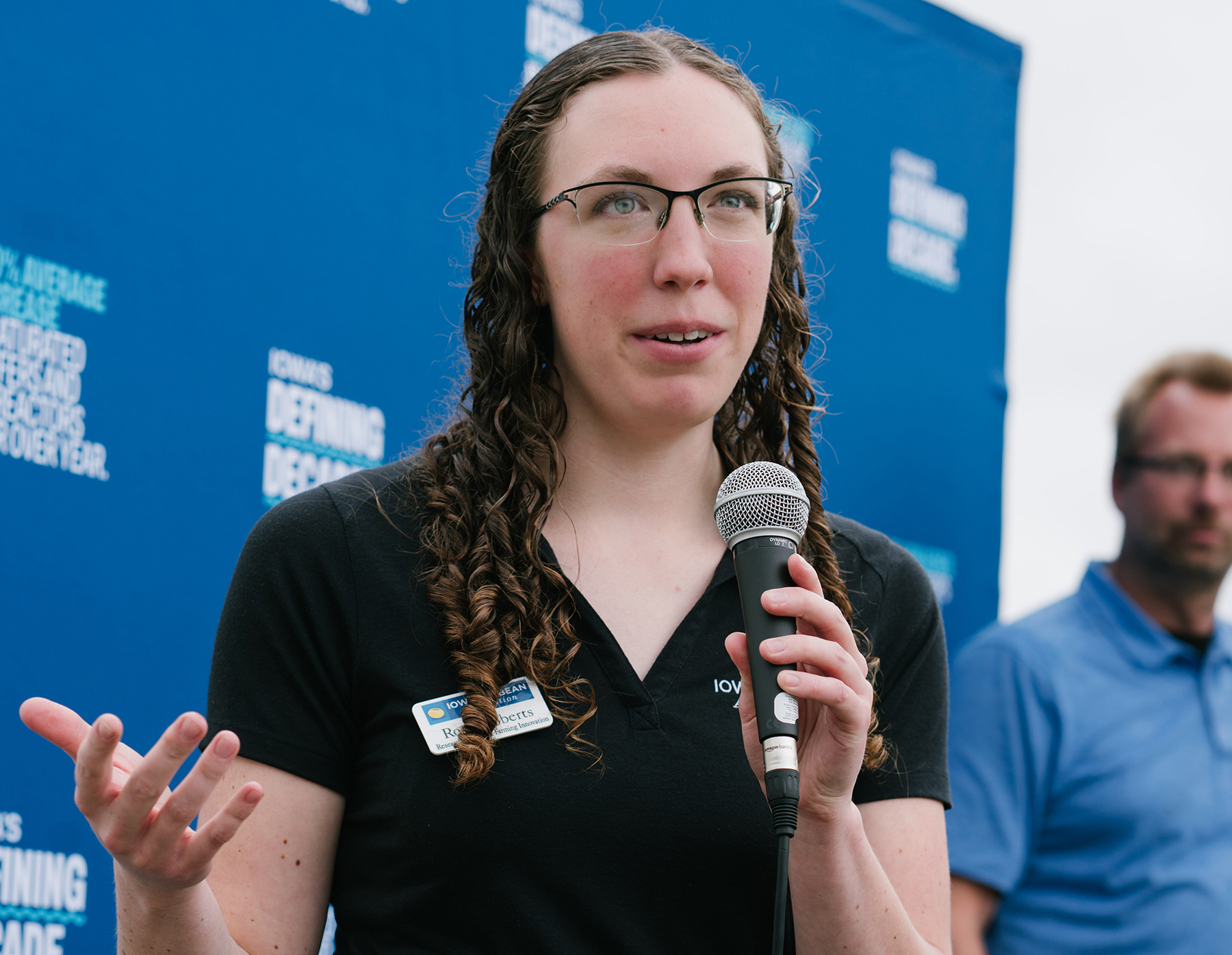Cover crop seeding, equipment options can help save time, money
By Adam Sodders
ANKENY, Iowa (IAWA) – As cover crop acres have spread across Iowa in the last 10 years, Iowa farmers are ever more aware of their powerful water quality and soil benefits – and of the public and private cost share programs helping farmers add them to their fields.
Now is a historically good time for farmers and landowners to seek cover crop incentives, but some costs are often not covered by cost share – the top example being seeding machinery.
“Equipment can be a barrier for farmers thinking about cover crops for the first time,” said Iowa Soybean Association (ISA) Conservation Agronomist Evan Brehm. “Not all farmers are set up for seeding cover crops right away.”

Take to the skies
While not all farmers have a drill – or at least one suited to cover cropping – Brehm and ISA Technical Insights Manager Rosie Roberts said aerial seeding can offer attractive savings for seeding cover crops.
For example, small airplanes are already a common tool used to meet farming needs (just ask anyone driving on an Iowa highway during the dog days of summer) – and they can readily be modified to carry cover crop seed.
“The bi-planes that spray fungicide – they’re putting on oats or rye,” Brehm said.
Likewise, drones are widely available and customizable, and Brehm is seeing more and more of them in his work with farmers, landowners, and ag retailers.

“Drones are an emerging technology, and there are a great deal of companies and farmers using them,” he said. “There are [agribusiness] companies buying drones for themselves to use in the field.”
Brehm said that while the $45,000-ish price tag for a new sprayer drone, like the DJI Agras T-50, is still a significant lift for many farmers, it is a fraction of the cost of top-quality, ground based high clearance equipment options.
Both popular aerial seeding options come with similar application rate costs – estimated around $20/acre. That means a new drone seeding cover crops starts paying for itself after about 4,000 acres.
Whether done by drone or airplane, Brehm said farmers should be aware that aerial seeding can be less precise than ground-based seeding. Drones’ power life limitations also mean they may not be well suited to seeding large tracts of land in a single session.
Lean on friends, neighbors, and local partnerships
“If buying machinery isn’t feasible for your operation, there are other options,” Roberts said. “Sometimes you can rent cover crop equipment – some local Soil and Water Conservation District offices have drills you can rent.”
She said the lighter costs and lower commitment of renting, versus buying, make it a strong money-saving tactic – especially for new cover croppers.
If you’re one of the growing number of Iowans noticing green, fall-seeded cover crops in your neighbors’ fields, Roberts suggested asking them for tips on finding affordable equipment. A neighbor might just have the machinery or parts needed to get started seeding – whether borrowed or provided as a service.
Sharing high-end, specialized cover crop equipment through public-private partnerships is another option for some farmers.

Through the Central Iowa Cover Crop Partnership, for example, eligible Polk County farmers can access a Hagie-Montag Interseeder, purchased in 2022 by the county with support from the City of Des Moines, Iowa Department of Agriculture and Land
Stewardship, Des Moines Water Works, and Heartland Co-op.
Another option for saving time and money on cover crop seeding is to hire a custom applicator. Roberts said such services continue growing in availability through co-ops and retailers, as well as farmer-run businesses.
A good place to start looking for a custom applicator is Practical Farmers of Iowa’s Find Cover Crops tool, which shows local service providers and offers expert recommendations for cover crop planting.
See the cover crop advantage
Overall, the benefits cover crops offer make them worth the initial costs and learning curves, even with equipment factored in.
“Cover crops reduce soil erosion, keep nutrients in the field, and reduce nitrates in our water. They also build up the soil profile and improve soil health,” Brehm said. “Growers with livestock can graze it, too.”
Improved weed management and earlier access to fields during a wet spring are two more sweet ingredients in the cover crops cocktail.
The best part? The incredible amount of cover crop incentives out there can shoulder a large portion of the costs, so farmers don’t have to. The public-private Midwest Ag Water Quality Partnership, a USDA-Natural Resources Conservation Service grant co-led by IAWA, is a great example.
“Cover crops can be used as a tool to help achieve your farm operation goals,” Roberts said. “Reach out to a conservation agronomist if you want to know more about cost share and ways to save money and time with cover crops.”
Published on Oct. 3, 2024
